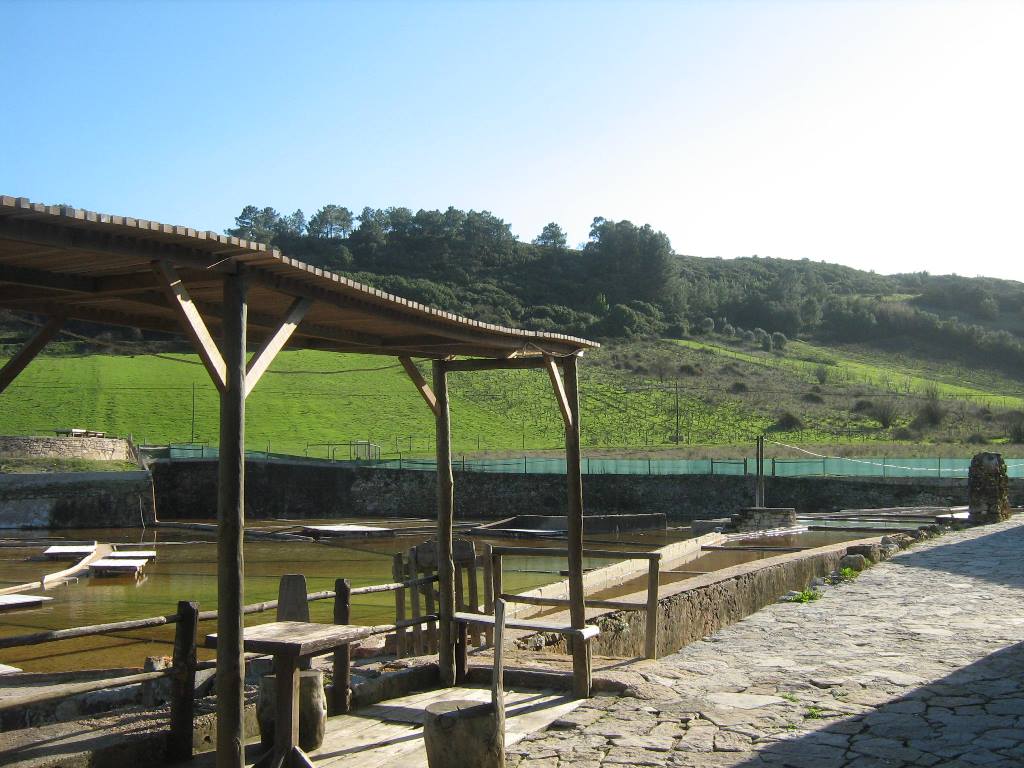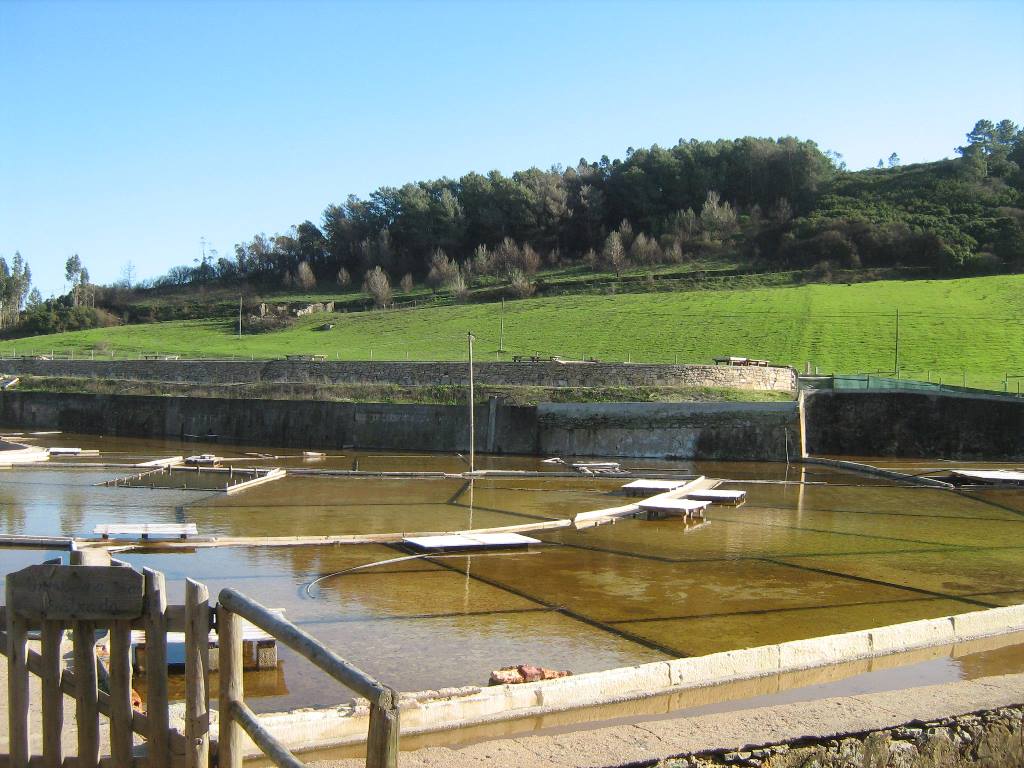The CARSOSCÓPIO - Alviela Ciência Viva Centre is an interactive facility built on promoting science and technology revolving around three interactive exhibits that basically discuss the local Limestone Geological Plates, their origins and t ...
Walking Route Salinas de Rio Maior, Marinhas do Sal
From the geological point of view, the saltworks are located in a diapiric valley. A diapir is a low density rock mass, relatively mobile, crossing other denser rocks. This vertical movement from bottom to top, is made along faults and allows evaporitic rocks (gypsum and rock salt) to appear on the surface through the limestones. In the Estremadura Limestone Massif these evaporite deposits were formed 205 million years ago. The existence of large accumulations of gypsum and rock salt tells us that it had environmental characteristics of the coast. The diapir located in Porto de Mos - Rio Maior follows the fault system of the Candeeiros Mountain, with a general orientation NNE-SSW and ends in the area of the present trail. Text taken from PR1 (PNSAC)
CHARACTERISTICS
City: Marinhas do Sal
Postal Code: 2040 - 133
Telephone: 243991121
Email: turismo@cm-riomaior.pt
Website: http://turismoriomaior.pt
Specific Conditions:
Activity and Type of trail: Walking, loop Length: 3 Km; Time to complete: 1.30h; Type of road: Dirt road Skill level: Easy Signs: On wooden sticks, stones and trees Location: Typhonic Valley located at Fonte da Bica, in the south of Candeeiros Mountain, at 3 km of Rio Maior Equipment: slight footwear with rubber soles, raincoat (winter time); the same kind of footwear, cotton t-shirt, sunhat, water (summer time) Nearby and Highlights: Tourism office, Restaurants and Bars, handicraft shops
Method:
On foot
Difficulty Level:
Low
Group Visits:
No
Guided Tours:
No
Observations:
-
-
Activity Program:
-
Study and Research Unit:
-
Audiovisual and Multimedia Resources:
-
Volunteering Programs:
-
T. Rodoviário
Agency Name:
Rodoviária do Tejo
Telephone Number:
243996003
Parking for private vehicles:
Yes
This house was always known as Manor House of D. Miguel, because during the period of the Liberal Revolution, in the 19th century, traditionally it was said that D. Miguel stayed here for a few days. It is possible to visit temporary exhibitions (painting, sculpture, photography, etc.), a long term exhibition of the artifacts found in the roman Villa of Rio Maior, as well as other pieces collected throughout Rio Maior which illustrate a little of its history, and a small space reserved to the Salinas.
gps: 39.33474 -8.93813
distance: 3km
Villa Romana de Rio Maior
The Roman Villa of Rio Maior dates back to the 3rd/4th century. It is possible to visit just a part of the Pars Urbana of the Villa. The collection from the archeological works is mostly composed by artifacts which reveal the luxury and richness of the Villa. Visits can be booked at the tourism office by the Salinas or at Casa Senhorial d’El Rei D. Miguel.
gps: 39.33295 -8.93921
distance: 3km
Dolmen de Alcobertas
Monument with unique features. Among the ten largest in the Iberian Peninsula and one of the most interesting in Europe. Dolmen-chapel dedicated to St. Mary Magdalene.
gps: 39.418565 -8.903599
distance: 10km
The complex also presents a walking trail of approximately 2km that takes visitors past many different and typical karsic geological phenomena of rare beauty. One of these attractions is the Amiais stream. This unique stream flows at the su ...
The Minde "Pincha" is a curious upwelling phenomena that is thought to have appeared due to the layering of sediment deposits on the edges of a lake that is believed to have existed in this area in the Glaciation Period – Quaternary. This G ...
The Alviela River Spring is located on the base of a cliff between the national limestone plate region and the lower Tagus tertiary basin. Here, a range of 150 million year old rocks are found together (Jurassic limestone and Tertiary sands ...
The Santo António Plateau is located in the heart of the Serras de Aire e Candeeiros Natural Park, east of the Candeeiros Mountain and south of the Aire Mountain and the São Mamede Plateau. The Santo Antonio Plateau harbors an uncommon kars ...





